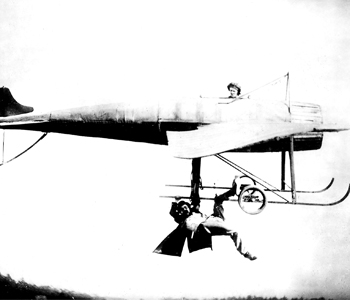Shane Hamilton
Trucking Country: The Road to America’s Wal-Mart Economy
Princeton University Press
344 pages, 9 x 6 inches
ISBN 978 0691135823
Trucking Country shows how the social history of long-haul truckers was enmeshed with the political history of America’s transition from the New Deal era to the conservative counter-revolution of the 1970s and onward. Truckers have often been understood as prototypical members of Richard Nixon’s “silent majority”—individuals whose social conservatism made them prime candidates for the tax-slashing, deregulatory, “red-state” free-market fanaticism of the Reagan-Bush-Clinton era of late-twentieth-century American political culture. As I demonstrate in this book, however, independent truckers—many of whom had rural roots—helped plant the seeds of the conservative counter-revolution long before the 1970s.
Independent truckers helped build a decentralized, “post-industrial,” non-unionized economy from the 1930s through the 1960s, establishing an economic order that brought low-priced consumer goods to American shoppers. While building this Wal-Mart economy premised on low wages and low prices, truckers virulently supported post-New Deal political visions of free enterprise. They inspired 1970s Hollywood and Nashville celebrations of the trucker as the “last American cowboy,” an outlaw renegade whose cultural politics helped set the stage for the deregulatory push of the late 1970s and early 1980s.
Trucking Country should enlighten readers who might otherwise assume, as Thomas Frank does in What’s the Matter with Kansas?, that modern-day “red-state” conservatism is the product of a devil’s bargain between culturally conservative rural workers and economically conservative demagogues in the Republican Party.

My book focuses on changing transportation technologies and economic linkages between city and country in order to tell a much broader story about the nature of American capitalism.
I began research on this project not so much because I was fascinated with truckers, trucking culture, or big rigs, but because I wanted to understand how transformations in rural life played into broader cultural and economic shifts in the United States in the mid-twentieth century. Most scholars who write about rural life in the second half of the twentieth century focus on the “death of the family farm” or on the plight of migrant workers on factory farms. I was searching for a way to shift the focus of agricultural history away from the farm fields and towards the consumers’ end of the food chain. I wanted to understand how the rise of agribusiness not only led to the decline of small-scale farming but also how the lives and politics of urban and suburban consumers were transformed during this period.
I was deeply influenced in this regard by William Cronon’s seminal work, Nature's Metropolis, which tells the story of Chicago’s rise to industrial prominence in the late 19th century by focusing on its technological connections to the rural hinterlands of what was then called the “Great West.” Like Cronon’s work, my book focuses on changing transportation technologies and economic linkages between city and country in order to tell a much broader story about the nature of American capitalism. In contrast with Cronon’s work, however, my book delves deeply into the social histories of the people—in this case, truckers—who helped shift American capitalism into overdrive in the late twentieth century.
The book ranges from analyses of country music to the business practices of meatpackers and the politics of transportation deregulation. This intertwining of social history and historical political economy is very much a product of my doctoral training at the Massachusetts Institute of Technology and at the Miller Center for Public Affairs at the University of Virginia. Working with Deborah K. Fitzgerald, Meg Jacobs, Lizabeth Cohen (at Harvard), and Brian Balogh (at Virginia), I was introduced to a stream of literature in what is often called “new political history.”
This line of research—much of which has been published by Princeton, in their series on Politics and Society in Twentieth-Century America—integrates “bottom-up” social history with more traditional “top-down” policy history. It is, in many ways, a reaction to both the successes and failures of overtly social history that flourished from the 1960s through the 1990s. For the social historians who by and large defined the historical profession’s agenda throughout this period, older political history had focused too much on politically powerful white men, ignoring the social experiences of women, minorities, immigrants, and working-class Americans. Despite the importance of the contributions made by social historians, by the 1980s many historians began to worry that the field had become overly fragmented, with no central narratives holding together American history. In response, a generation of younger historians has begun, over the past two decades, to work hard to integrate the insights of social history while reviving interest in the policy decisions and political structures that shape Americans’ daily lives.
Most of the key works in this “new political history,” however, have by and large ignored the social and economic history of rural America. This oversight is understandable; by the end of the twentieth century, after all, less than two percent of the U.S. population was directly engaged in agriculture, and the overwhelming majority of Americans lived in metropolitan regions of the nation. But as I strove to demonstrate in Trucking Country, the social experiences and material worlds of rural Americans were central, rather than peripheral, to the transformation of U.S. politics and economic concerns over the course of the twentieth century.
In this sense, my book contributes to a recent resurgence of interest in agricultural and rural history—perhaps best evidenced by the runaway success of Michael Pollan’s 2005 bestseller, Omnivore's Dilemma—as Americans who are largely alienated from the rural sources of their foodstuffs become increasingly concerned about where their food comes from, who produces it, and what are the environmental and economic implications of their food purchasing practices.
One of the reasons Trucking Country appeals to general interest readers outside of the academy is my attention to the cultural history of trucking, particularly the Hollywood movies and Nashville country songs that celebrated the American truck driver. Many people may be aware of the 1978 film Convoy, starring Kris Kristofferson as a renegade trucker who defies the Teamsters, the federal government, and Sheriff “Dirty” Lyle Wallace (played by Ernest Borgnine) as he leads a “mighty convoy” across the country. Most readers are, however, probably unfamiliar with such cultural gems as They Drive by Night, a 1940 Warner Brothers film starring George Raft and an actor who was then relatively unknown—Humphrey Bogart. Widely regarded by film historians as a classic “social conscience” film from the New Deal era, They Drive by Night focuses on the travails of two truckers, Joe and Paul Fabrini, as they strike out on their own to make a living as independent haulers of farm products in California. Not long afterwards, the Nashville country music industry hit upon the idea of marketing trucking tunes to roadside cafes via a new technology of the time: the jukebox. Early trucking songs, including Art Gibson’s 1947 western-swing number “I'm a Truck Drivin' Man” and Ted Daffan’s 1952 “Truck Driving Man” were aimed explicitly at truck drivers as a market segment inclined to listen to country music.
Like other country songs from the period (and unlike the rock n’ roll music that came to the forefront of American popular music in the 1950s), these tunes dealt directly with the daily concerns of working-class Americans. Later country music songs about truckers scored tremendous successes, particularly Dave Dudley’s 1963 recording of “Six Days on the Road,” along with a raft of similarly rousing paeans to the American trucker in the late 1960s and 1970s—from Merle Haggard’s “Movin’ On” to Red Sovine’s spoken-word tear-jerker, “Teddy Bear.” Country music scholar Bill Malone has gone so far as to say that trucking songs account for the largest component of work songs in the country music catalog. For a style of music that has, since its commercial inception in the 1920s, drawn attention to the coal man, the steel drivin’ man, the railroad worker, and the cowboy, this certainly speaks volumes about the cultural attraction of the trucker in the American popular consciousness.
As I show in Trucking Country, the close fit between country music and trucker culture was a product of at least two phenomena. First, many of the men who became truckers in the mid-twentieth century had deep rural roots; in fact, many turned to trucking because they saw little economic opportunity on the family farm in the era of agribusiness consolidation. Having grown up in the countryside, many of these men (the vast majority of whom were white) appreciated country music above all other forms of entertainment. Second, and closely related, the special brand of hyper-masculine anti-authoritarianism touted by country songwriters who wrote about truckers and trucking appealed to men who deeply cherished their sense of “independence”—as drivers of big rigs who, unlike factory workers or “desk pilots” did not have the constant oversight of management as they performed their work. This anti-authoritarian sensibility also informed the broader public’s fascination with trucking songs, movies, and Citizens Band or CB culture, particularly in the 1970s, when much of American popular culture took a “southern” turn towards rebel-rousing defiance of mainstream middle-class standards of behavior.

I wanted to understand how transformations in rural life played into broader cultural and economic shifts in the United States in the mid-twentieth century.
In the 1970s, tens of thousands of independent truckers armed themselves with shotguns to protest what they saw as the collapse of the American Dream due to over-regulation of the U.S. economy. Through the 1980s, 1990s, and early 2000s, their wishes for a less-regulated, consumer-driven, anti-union economy were largely granted by the Reagan, Bush I and II, and Clinton administrations. Today, the American economy also faces what is often called a crisis of capitalism akin to that of the 1970s. But today ordinary working Americans are confronted with the legacies of lax government oversight and free market ideologies taken to extremes.
Although my book was not written to address how policymakers or voters should confront the emerging collapse of the American Dream, I hope that readers would gain a fuller understanding of how the current crisis came about. For the past few decades, American political culture has been characterized by a woeful lack of understanding of issues of political economy. The rhetoric has been overheated, on both the Left and the Right, about the proper role of government in shaping and overseeing the distribution of wealth in our economy. Anyone who reads my book will gain a much more nuanced understanding of how American capitalism works. Such knowledge, I am certain, can contribute to a more productive and informed political culture as our nation’s leaders revive the idea that federal economic regulation can serve, rather than hinder, the interests of working Americans.




We don't put paywalls. We don't distract you with ads. We don't sell your data.
Please help to keep this running!